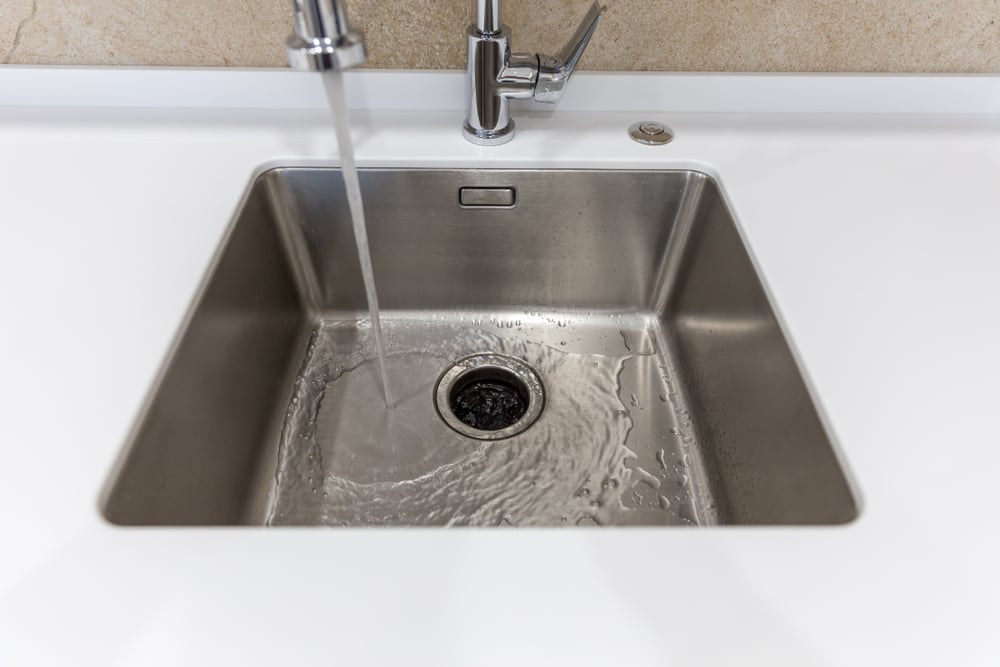Listed here in the next paragraph you might get lots of wonderful news relating to Why Is .

Garbage disposals are important kitchen appliances that aid in throwing away food waste successfully. Nonetheless, a dripping garbage disposal can be a frustrating and untidy issue to deal with. The good news is, numerous leaks can be taken care of easily with a couple of easy actions. In this short article, we will certainly go over how to take care of a leaking waste disposal unit effectively.
Introduction
Waste disposal unit are installed under kitchen area sinks and are developed to shred food waste right into smaller pieces, enabling it to travel through the plumbing system easily. While these gadgets are usually reliable, leaks can happen over time due to wear and tear, loosened links, or damage to the device.
Step-by-Step Overview to Taking Care Of a Dripping Garbage Disposal
Turn Off the Power
Before trying any kind of fixings, make certain that the power to the garbage disposal device is switched off to stop the danger of electric shock.
Situate the Leakage
Determine the exact area of the leakage and identify the cause
Tighten up Connections
Use a wrench to tighten any kind of loosened connections in between the disposal unit and the pipes system.
Replace Seals or Gaskets
If the leakage is because of used seals or gaskets, eliminate the old parts and change them with new ones.
Patching Splits or Holes
For splits or holes in the disposal system, usage epoxy or an appropriate patching product to seal the broken area.
Recognizing the Source of the Leak
Prior to trying to fix a leaking waste disposal unit, it is essential to determine the source of the leakage. This can normally be done via aesthetic inspection or by conducting easy tests.
Visual Assessment
Examine the waste disposal unit system thoroughly for any kind of signs of water leakage. Pay very close attention to locations around seals, gaskets, and connection factors.
Checking for Leaks
One method to examine for leaks is by running water through the disposal system and checking for any kind of visible signs of leakage.
Usual Reasons For Leakages in Trash Disposals
Worn Seals and Gaskets
Seals and gaskets play a crucial duty in protecting against water from dripping out of the garbage disposal. With time, these elements can wear away, causing leakages around the disposal system.
Loose Links
The connections between the waste disposal unit and the plumbing system can end up being loosened in time, creating water to leakage out during procedure.
Cracks or Holes in the Disposal System
Physical damages to the garbage disposal, such as cracks or holes in the real estate, can additionally cause leaks.
Devices and Products Needed for Dealing With a Dripping Garbage Disposal
Before starting the fixing procedure, collect the essential devices and materials, including a screwdriver, adjustable wrench, plumbing's putty, replacement seals or gaskets, and epoxy or patching material for fixing splits or openings.
Evaluating the Garbage Disposal After Repair
Once the fixing is full, check the garbage disposal by running water via it to make certain that the leak has actually been dealt with.
Preventive Upkeep Tips to Prevent Future Leaks
To stop future leaks, it is important to perform normal maintenance on your garbage disposal. This consists of maintaining it clean, preventing placing non-food things or hard things down the disposal, and periodically checking for leaks or various other problems.
Conclusion
To conclude, dealing with a leaking garbage disposal is a reasonably uncomplicated process that can be completed with standard devices and materials. By complying with the actions outlined in this article and exercising precautionary maintenance, you can maintain your garbage disposal in good working problem and prevent costly fixings in the future.
What to Do About a Leaking Garbage Disposal
A leaking garbage disposal often goes unnoticed until you confront a sopping cabinet, a foul-smelling puddle, or an audible drip-drip-drip from the unit. The fix can be frustrating, too, because the leak can stem from a number of components in the system. Fortunately, with a little sleuthing, you can zero in on the leak and—depending on the exact location—stop the icky oozing and repair the component that caused it. Worst case scenario, if it turns out that the garbage disposal must be replaced, installing a new one is a reasonable do-it-yourself task for those with basic plumbing skills. Read on to keep the cash you’d otherwise hand over to a pro.
Prepare to find the leak
Prior to testing the garbage disposal for leaks, unplug it at the wall outlet and turn off the power from the breaker box to prevent electrical shock. Then insert a watertight sink stopper into your sink drain and wipe the unit dry with a clean cloth. In any handy container, mix a few drops of food coloring into a few cups of water, and pour the dyed water onto the sink stopper to help you locate the leak.
Investigate the source
the top, where the disposal meets the sink drain the side, where the dishwasher hose or main drain pipe connects to the disposal or the bottom of the unit Inspect each of these locations while gliding a light-colored rag over the unit; the dyed water will readily show on the rag and reveal the location of the leak. If a leak isn’t immediately apparent, remove the sink stopper and pour a few more cups of dyed water down the sink drain, then check for leaks again. Leaks near the top of the unit are more likely to show themselves while the sink is plugged, while side and bottom leaks are more noticeable while the sink is unplugged.
The metal sink flange that sits directly inside the sink drain is typically sealed around the top with plumber’s putty (a clay-like sealant) and then secured from under the sink with bolts. If the plumber’s putty deteriorates, or the bolts loosen, the flange can no longer form a watertight seal between the sink drain and the disposal—which could cause a leak at the top of the unit.
To reseal the leaky flange, you must first detach the garbage disposal. Start by loosening the screws securing the main drain pipe to the disposal, then loosen the screws in the metal clamp securing the dishwasher hose to the disposal and detach the drain pipe and dishwasher hose from the disposal. Loosen the screws in the mounting ring that connects the disposal to the metal mounting assembly beneath the sink, then pull down the disposal and carefully set it on a clean, dry surface. Loosen the bolts in the mounting assembly with a wrench, then pull down the mounting assembly and set it near the disposal.

I found that post on How to fix a pretty consistent leak from my garbage disposal when doing a search on the internet. Don't hesitate to take the time to promote this post if you liked it. Thank you so much for taking the time to read it.
Call Today